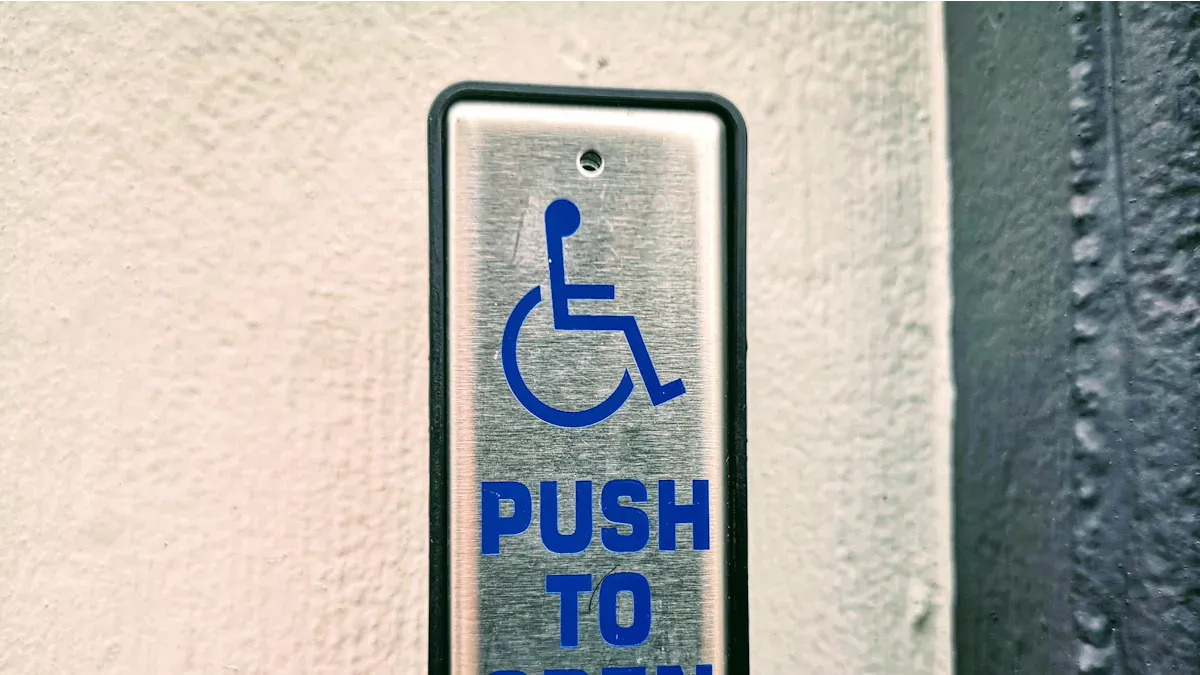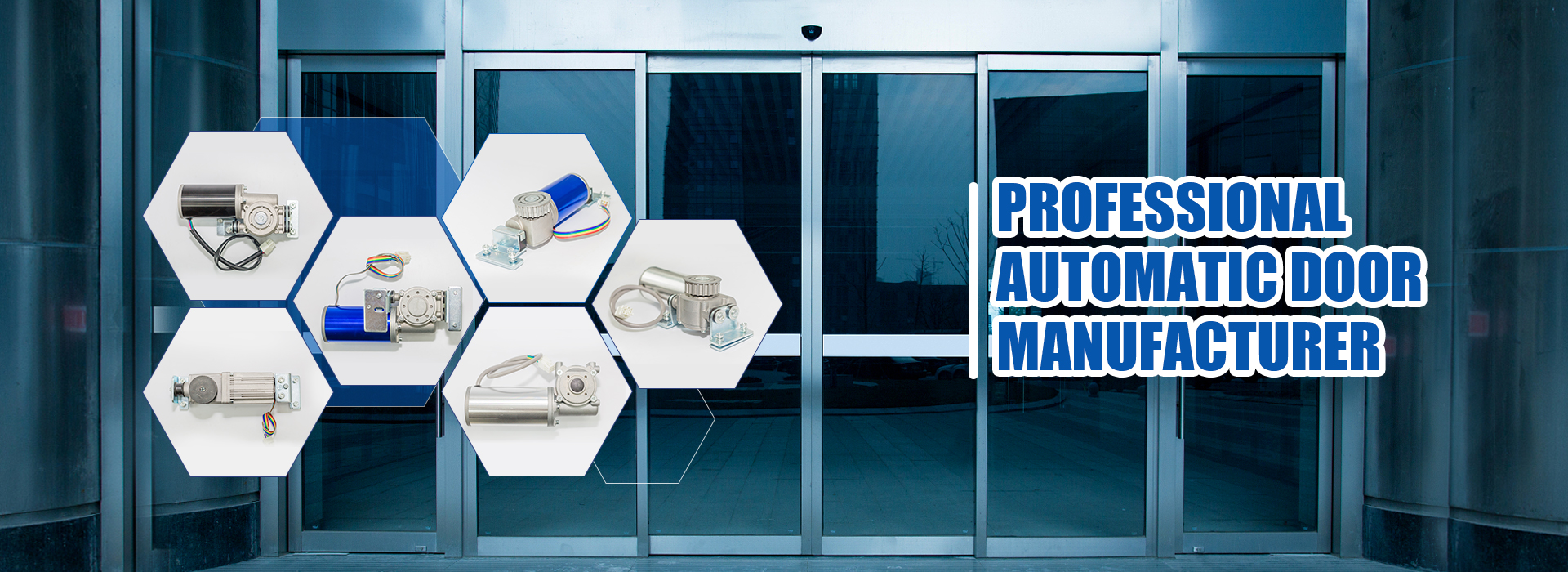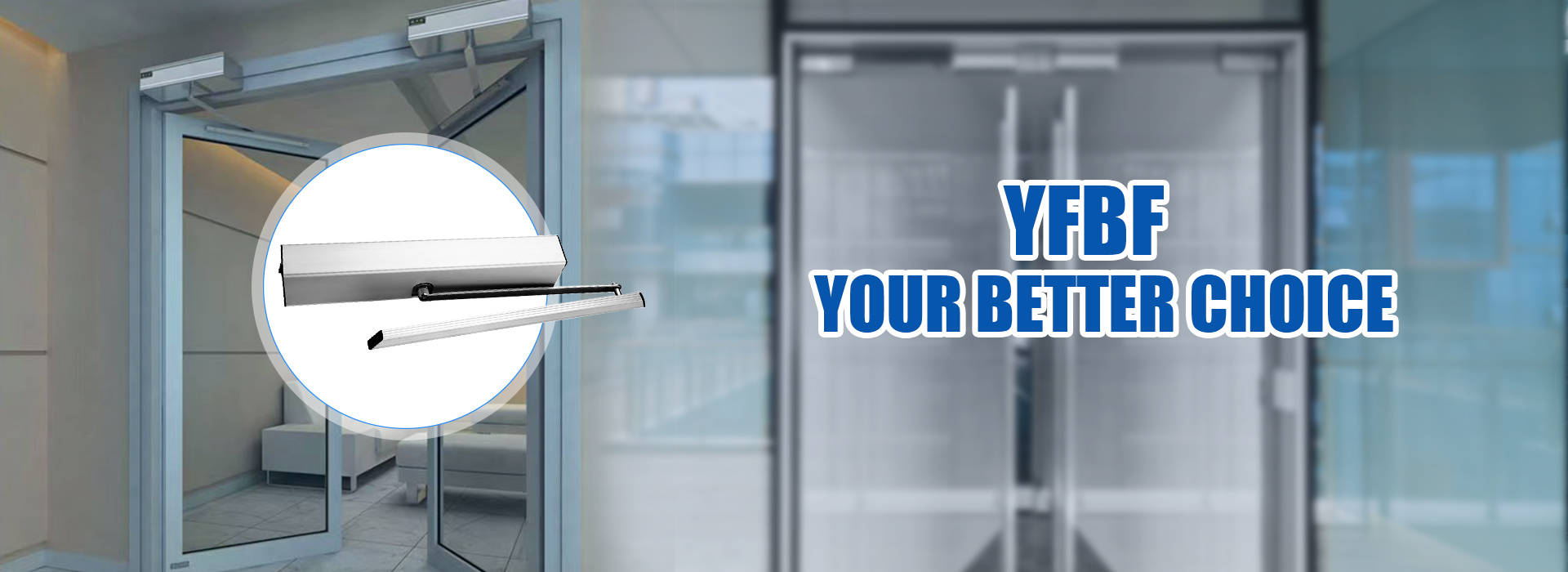
A visitor rushes toward the door, arms full of packages. The Automatic Swing Door Operator senses movement and swings open, offering a grand, hands-free welcome. Hospitals, offices, and public spaces now celebrate barrier-free access, thanks to rising demand for effortless entry, especially among people with mobility challenges.
Key Takeaways
- Automatic swing door operators provide hands-free, easy access that helps people carry items and supports those with mobility challenges.
- These doors improve safety and hygiene by reducing touchpoints, lowering the spread of germs, and using sensors to prevent accidents.
- They fit well in tight spaces, work with many door types, and meet important safety and accessibility standards, making them a smart, flexible choice for many buildings.
How Automatic Swing Door Operator Systems Work
Sensor Activation and Touchless Entry
Imagine a door that opens like magic—no need to push, pull, or even touch. That’s the charm of an Automatic Swing Door Operator. These clever devices use sensors to spot people coming and going. Some sensors wait for a person to wave or press a button, while others jump into action the moment they sense movement. Take a look at how different sensors work:
| Sensor Type | Activation Method | Typical Use Case | Activation Rate Characteristics |
|---|---|---|---|
| Knowing Act Devices | Deliberate user action | Schools, libraries, hospitals (low-energy use) | User must act; slower activation |
| Motion Sensors | Automatic detection of movement | Grocery stores, busy public spaces (full-energy) | Detects presence; faster activation |
Motion sensors act like superheroes in high-traffic areas. They open doors quickly, letting crowds flow smoothly. Knowing act devices, on the other hand, wait for a signal from the user, making them perfect for quieter spots.
Touchless entry systems do more than just impress visitors. They help keep everyone healthy. By removing the need to touch door handles, these systems cut down on the spread of germs and bacteria. In places like hospitals and schools, where cleanliness matters most, touchless doors help create a safer, cleaner environment. Since most germs travel by touch, hands-free doors become silent guardians against illness.
Motorized Mechanisms and Door Control
Behind every smooth-swinging door stands a powerful motor. The Automatic Swing Door Operator uses either a low-energy or full-power motorized mechanism. Some models rely on electromechanical units with a motor gearbox, while others use advanced microprocessors to control every move. These motors open doors wide, even when space is tight, making them perfect for offices, meeting rooms, and workshops.
Safety always comes first. Modern operators use smart controllers to adjust how fast and how hard the door moves. For example, if a strong wind tries to slam the door shut, the system compensates and keeps things gentle. Safety sensors watch for obstacles, stopping the door if someone steps into its path. Some operators even let users open doors manually during a power outage, so no one gets stuck.
Tip: Many Automatic Swing Door Operators include a “push and go” feature. Just a gentle nudge, and the door swings open automatically—no muscle needed!
Integration with Access Control and Customization
Security and convenience go hand in hand. In commercial buildings, Automatic Swing Door Operators often team up with access control systems. These systems use electric strikes, latch retraction kits, and card readers to decide who gets in. Here are some common ways they work together:
- Electric strikes and latch retraction kits boost security and make doors smarter.
- Push-buttons, wave switches, and hand-held transmitters offer different ways to open doors.
- Access card readers (like FOBs) control who can enter, working with the operator to unlock and swing the door open.
Modern operators also allow for plenty of customization. Building managers can set how fast the door opens, how long it stays open, and even connect the system to smart building controls. Some advanced models use 3D laser scanners to spot people’s movement and adjust the door’s speed, making every entrance feel like a VIP experience.
Automatic Swing Door Operators bring together technology, safety, and style. They fit into almost any space, from busy hospitals to quiet meeting rooms, making life easier for everyone.
Benefits and Considerations of Automatic Swing Door Operator

Everyday Convenience and Accessibility
Picture a busy hospital hallway. Nurses push carts, visitors carry flowers, and patients move in wheelchairs. The Automatic Swing Door Operator swings into action, opening doors with a gentle whoosh. No one needs to juggle bags or fumble for handles. This technology uses sensors and motorized arms to spot people coming and going, making every entrance feel like a VIP pass.
Automatic swing doors have changed daily life for many. They open wide for parents with strollers, shoppers with carts, and anyone whose hands are full. People with disabilities find these doors especially helpful. The doors provide a clear opening of at least 32 inches, giving wheelchairs plenty of space. The opening force stays low—no more than 5 pounds—so even those with limited strength can pass through easily. The doors move at a steady pace, staying open long enough for slow walkers to get by safely. ADA-compliant push plates and wave sensors let everyone open the door with a simple gesture.
Fun Fact: Early automatic doors amazed people by opening as if by magic. Today, they still bring a touch of wonder to everyday life!
Safety, Hygiene, and Energy Efficiency
Safety and cleanliness matter everywhere, but especially in places like hospitals and offices. Automatic Swing Door Operators help keep germs at bay. Touchless entry means fewer hands on door handles, which cuts down on the spread of bacteria. Experts say that reducing touchpoints makes spaces cleaner and safer for everyone. Hospitals, bathrooms, and retail stores all benefit from this hands-free technology.
- Touchless operation limits the spread of germs.
- Doors open only when needed, keeping air clean and reducing drafts.
- Sensors and slow speeds prevent accidents, making doors safe for kids and seniors.
Energy efficiency gets a boost, too. These doors open only when someone approaches, so they don’t let out heat in winter or cool air in summer. Sensors adjust how long the door stays open, saving energy and lowering utility bills. Low-energy motors use less electricity, which helps the planet and saves money.
Space Requirements and Installation Flexibility
Not every building has grand, wide entrances. Some spaces feel tight, with little room to spare. The Automatic Swing Door Operator fits right in. Its compact design works in offices, meeting rooms, workshops, and medical rooms—places where every inch counts.
- Operators can mount on either the push or pull side of a door.
- Low-profile models fit under low ceilings or in narrow hallways.
- Flexible arms and smart sensors adapt to different door types and layouts.
- Retrofitting existing doors is easy and cost-effective, avoiding the need for major renovations.
Tip: Many operators include features like Open Position Learning, which helps prevent damage to walls and doors during installation.
Compliance and Compatibility with Different Doors
Building codes and standards keep everyone safe and comfortable. Automatic Swing Door Operators meet strict rules for accessibility, safety, and performance. Here’s a quick look at some important standards:
| Code/Standard | Edition/Year | Key Requirements for Automatic Swing Door Operators |
|---|---|---|
| ADA Standards for Accessible Design | 2010 | Max operable force 5 lbs; recommends automation for heavy doors |
| ICC A117.1 | 2017 | Limits operational force; sets width and timing requirements |
| International Building Code (IBC) | 2021 | Mandates operators at accessible public entrances for certain occupancy groups |
| ANSI/BHMA Standards | Various | Specifies safety and performance for low-energy (A156.19) and full-speed (A156.10) automatic doors |
| NFPA 101 Life Safety Code | Latest | Addresses locking and egress requirements |
Manufacturers design operators to work with many door materials and sizes. For example, the Olide120B model fits doors from 26″ to 47.2″ wide and works in hospitals, hotels, offices, and homes. The Terra Universal operator handles doors up to 220 lbs and fits both push and pull applications. These features make the Automatic Swing Door Operator a smart choice for almost any building.

Note: Swing door operators usually cost less to install than sliding door systems, making them a budget-friendly upgrade for many facilities.
Every building tells a story of movement and ease. Hospitals see smoother patient care. Retail stores welcome more happy shoppers. When choosing the right door operator, people should check door size, traffic, power use, noise, safety, and budget. Smart choices open doors to comfort and style.
FAQ
How does an automatic swing door operator know when to open?
Sensors act like tiny detectives. They spot people or objects near the door. The operator swings into action, opening the door with superhero speed.
Can someone open the door if the power goes out?
Yes! Many operators let people push the door open by hand. The built-in closer gently shuts the door afterward. No one gets trapped.
Where can people install automatic swing door operators?
People install these operators in offices, medical rooms, workshops, and meeting rooms. Tight spaces welcome them. The operator fits almost anywhere a regular swing door lives.
Post time: Jul-28-2025



